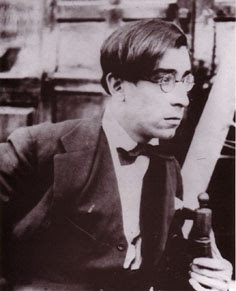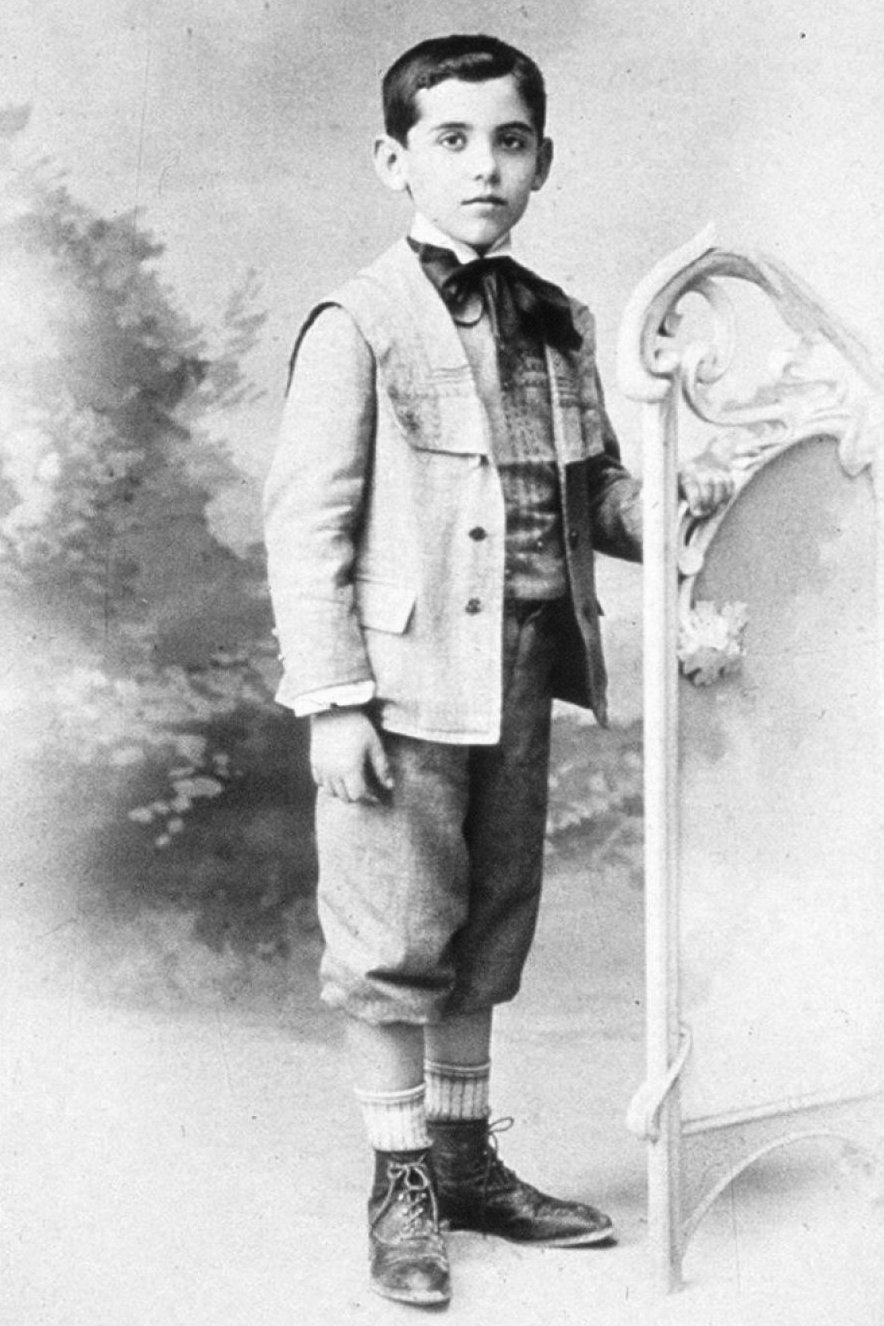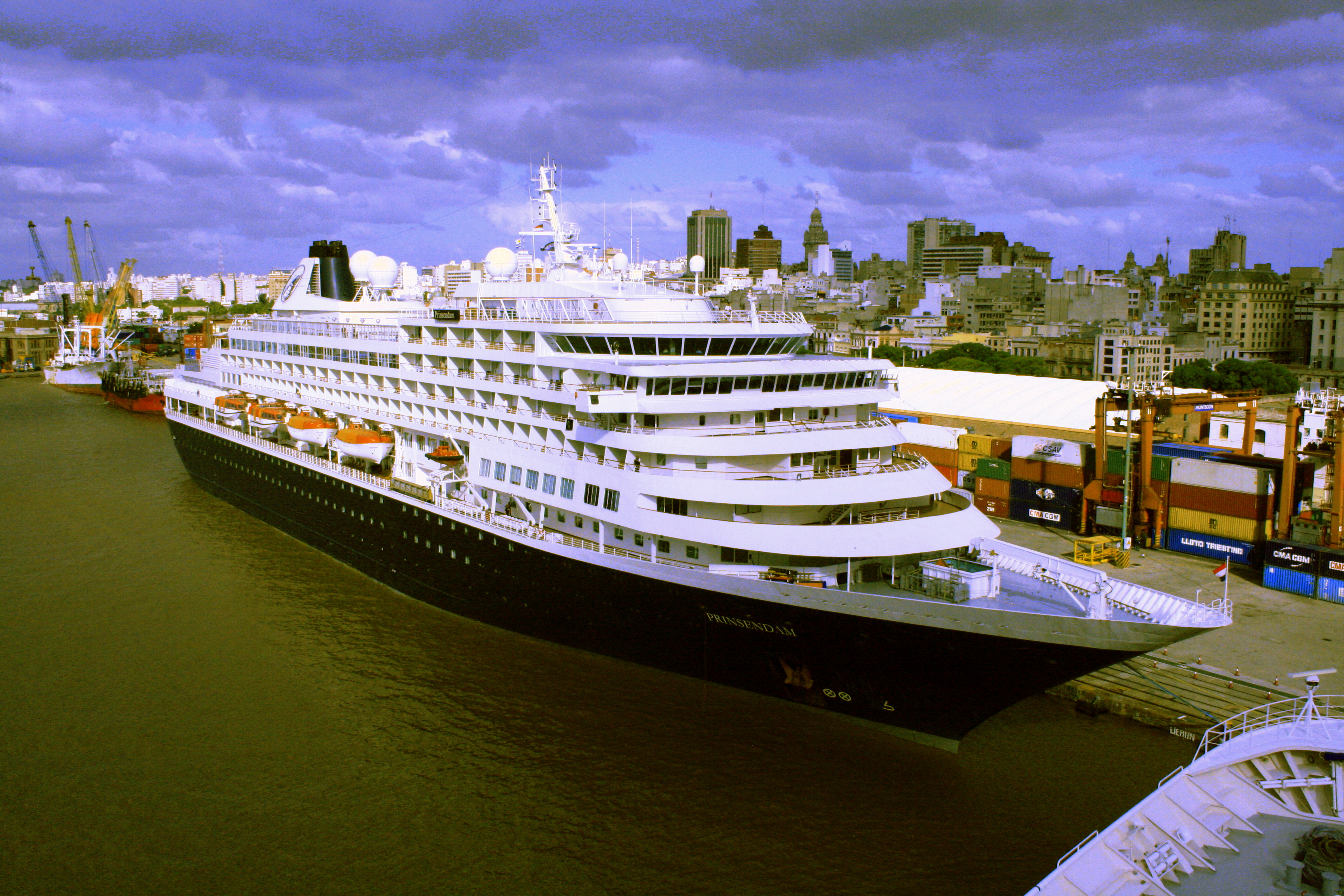|
Rafael Barradas
Rafael Pérez Giménez Barradas (4 January 1890 in Montevideo – 12 February 1929 in Montevideo), was an Uruguayan modernist painter and graphic artist who worked in Spain. Biography His parents were immigrants from Spain. His older sister, Carmen, was a pianist and composer. His younger brother, Antonio, was a poet who wrote under the name . He absorbed an interest in art from his father at an early age and was almost entirely self-taught. Magazine illustrations constituted his first professional work and, in 1912, he had his first exhibition, together with Guillermo Laborde. In 1913, he was invited to travel to Europe with a friend who had won a government grant to study singing at La Scala in Milan. While there, he came into contact with the Futurist movement and spent some time in Paris, where he was exposed to the latest trends in art. As a result, he developed his own variation on Cubism, which he called "Vibrationism". [...More Info...] [...Related Items...] OR: [Wikipedia] [Google] [Baidu] |
Rafael Barradas2
Rafael may refer to: * Rafael (given name) or Raphael, a name of Hebrew origin * Rafael, California * Rafael Advanced Defense Systems, Israeli manufacturer of weapons and military technology * Hurricane Rafael, a 2012 hurricane Fiction * ''Rafael'' (TV series), a Mexican telenovela * ''Rafaël'' (film), a 2018 Dutch film People * Rafael (footballer, born 1978) (Rafael Pires Vieira), Brazilian football striker * Rafael (footballer, born 1979) (Rafael da Silva Santos), Brazilian football defender * Rafael (footballer, born 1980) (Rafael Pereira da Silva), Brazilian football right-back * Rafael (footballer, born March 1982) (Rafael de Andrade Bittencourt Pinheiro), Brazilian football goalkeeper * Rafael (footballer, born August 1982) (Rafael dos Santos Silva), Brazilian football striker * Rafael (footballer, born 1984) (Alberto Rafael da Silva), Brazilian football goalkeeper * Rafael (footballer, born 1986) (Rafael Diego de Souza), Brazilian football centre-back * Ra ... [...More Info...] [...Related Items...] OR: [Wikipedia] [Google] [Baidu] |
Gregorio Martínez Sierra
Gregorio Martínez Sierra (6 May 1881 – 1 October 1947) was a Spanish writer, poet, dramatist, and theatre director, a key figure in the revival of the Spanish theatrical avant-garde in the early twentieth century. Work as a poet and playwright Martínez Sierra's literary career began at the age of 17 with the publication of ''El poema del trabajo'' ('The Poem of Work', 1898), a volume of poetry in the modernist style. His subsequent books of poetry included ''Diálogos fantásticos'' ('Fantastic Dialogues', 1899), ''Flores de escarcha'' ('Frost Flowers', 1900) and ''La casa de primavera'' ('The House of Spring', 1907). As a playwright, Martínez Sierra was one of the few progressive dramatists whose productions achieved any measure of commercial success at the time of their composition. His major works include ''La sombra del padre'' ('Shadow of the Father', 1909), ''Primavera en otoño'' ('Spring in Autumn', 1911), ''Sólo para mujeres'' ('For Women Only', 1913), ''Mamá'' ... [...More Info...] [...Related Items...] OR: [Wikipedia] [Google] [Baidu] |
Correo Uruguayo
{{Uruguay-company-stub ...
Correo Uruguayo (officially Administración Nacional de Correos) is the national postal service in Uruguay. See also *Postage stamps and postal history of Uruguay *Universal Postal Union *Postal Union of the Americas, Spain and Portugal External links Official website. * * Uruguay Uruguay (; ), officially the Oriental Republic of Uruguay ( es, República Oriental del Uruguay), is a country in South America. It shares borders with Argentina to its west and southwest and Brazil to its north and northeast; while bordering ... [...More Info...] [...Related Items...] OR: [Wikipedia] [Google] [Baidu] |
El Observador (Uruguay)
El Observador is a Uruguayan newspaper A newspaper is a periodical publication containing written information about current events and is often typed in black ink with a white or gray background. Newspapers can cover a wide variety of fields such as politics, business, sports a ..., published for the first time on October 22, 1991, and distributed nationwide. Its circulation is verified by the Argentine institution IVC. References External links Official site Newspapers published in Uruguay Spanish-language newspapers Publications established in 1991 1991 establishments in Uruguay Mass media in Montevideo Spanish-language websites {{uruguay-newspaper-stub ... [...More Info...] [...Related Items...] OR: [Wikipedia] [Google] [Baidu] |
El País (Uruguay)
''El País'' is a Uruguayan newspaper, first published on September 14, 1918, and distributed nationwide. It previously belonged to the same media group as the television channel Teledoce. Its website is ranked 6th in Uruguay according to Alexa. Its circulation is verified by the Argentine institution IVC. History Established in Montevideo, ''El País'' was originally edited by Leonel Aguirre, Eduardo Rodríguez Larreta and Washington Beltrán Barbat. Begun as a political newspaper devoted to the National Party, it later developed into a general interest newspaper. For decades, ''El País'' has been among the leading written media in Uruguay, with a circulation of 65,000 on weekdays and 100,000 on Sundays. Its editorial focus is on the social, political and economic news of Uruguay, as well as the Mercosur regional trade alliance. Awards From 1991 to 2012 ''El País'' had been awarding the prize "El País King of European Soccer" for the best footballer in Europe. The fir ... [...More Info...] [...Related Items...] OR: [Wikipedia] [Google] [Baidu] |
University Of Zaragoza
The University of Zaragoza, sometimes referred to as Saragossa University () is a public university with teaching campuses and research centres spread over the three provinces of Aragon, Spain. Founded in 1542, it is one of the oldest universities in Spain, with a history dating back to the Roman period. Prime Ministers Pascual Madoz, Manuel Azaña, Salustiano de Olózaga and Eusebio Bardají, the Nobel Prize laureate and father of modern neuroscience Santiago Ramón y Cajal, the Catholic saint Josemaría Escrivá and the Cuban national hero Jose Marti studied at this university. History Beginnings Ecclesiastical schools were the initial elements of the University of Zaragoza. These schools were later consolidated into the School of Zaragoza, led by Bishop Braulio during the seventh century (who would later be made the patron saint of the university). The School of Arts officially became a university in 1542, though some scholars argue it could be considered a university o ... [...More Info...] [...Related Items...] OR: [Wikipedia] [Google] [Baidu] |
García Lorca
García or Garcia may refer to: People * García (surname) * Kings of Pamplona/Navarre ** García Íñiguez of Pamplona, king of Pamplona 851/2–882 ** García Sánchez I of Pamplona, king of Pamplona 931–970 ** García Sánchez II of Pamplona, king of Pamplona 994–1004 ** García Sánchez III of Navarre, king of Navarre 1035–1054 ** García Ramírez of Navarre, king of Navarre 1134–1150 * Kings of León/Galicia ** García I of León ** García II of Galicia Places * Garcia, Tarragona, a municipality in Ribera d'Ebre, Spain * García, Nuevo León, a municipality in Mexico * Garcia, Colorado, an unincorporated town in the United States Entertainment * ''Los tres García'' ( en, The Three Garcias), Mexican film from the Golden Age of cinema Television * ''Los Garcia'' ( en, The Garcias), Puerto Rican television comedy show the 1970s * ''The Garcias'', American television series * ''¡García!, García!'', Spanish television series Music * Garcia (album), ''Garcia'' ... [...More Info...] [...Related Items...] OR: [Wikipedia] [Google] [Baidu] |
Museo Nacional De Artes Visuales
National Museum of Visual Arts (Uruguay) ( es, Museo Nacional de Artes Visuales) a museum in Parque Rodó, Montevideo, Uruguay. It was inaugurated on December 10, 1911. This museum has the largest collection of Uruguayan artworks. Among them are works by Olga Piria, Rafael Barradas, Joaquín Torres García, José Cúneo, Carlos Federico Sáez, Pedro Figari, Juan Manuel Blanes and artist Pablo Serrano Pablo Serrano Aguilar, (8 March 1908, Crivillén, Teruel – 26 November 1985, Madrid) was a Spanish abstract sculptor. Personal life 1920–1925. Pablo Serrano studied as a boarder in the Escuelas Profesionales Salesianas in Sarriá (Barcel ... who lived in Montevideo for twenty years. The museum also hosts temporary shows, in many cases foreign artists' itinerant exhibitions. Exhibitions * 1, ground floor. surface: 152 m2 * 2, ground floor. Area: 1015 m2 * 3, first floor. Surface: 110 m2 * 4, first floor. Surface: 634 m2 * 5, room, upstairs. Surfac ... [...More Info...] [...Related Items...] OR: [Wikipedia] [Google] [Baidu] |
Federico García Lorca
Federico del Sagrado Corazón de Jesús García Lorca (5 June 1898 – 19 August 1936), known as Federico García Lorca ( ), was a Spanish poet, playwright, and theatre director. García Lorca achieved international recognition as an emblematic member of the Generation of '27, a group consisting mostly of poets who introduced the tenets of European movements (such as symbolism, futurism, and surrealism) into Spanish literature. He initially rose to fame with '' Romancero gitano'' (''Gypsy Ballads'', 1928), a book of poems depicting life in his native Andalusia. His poetry incorporated traditional Andalusian motifs and avant-garde styles. After a sojourn in New York City from 1929 to 1930—documented posthumously in ''Poeta en Nueva York'' (''Poet in New York'', 1942)—-he returned to Spain and wrote his best-known plays, ''Blood Wedding'' (1932), ''Yerma'' (1934), and ''The House of Bernarda Alba'' (1936). García Lorca was gay and suffered from depression after the end ... [...More Info...] [...Related Items...] OR: [Wikipedia] [Google] [Baidu] |
Barrio Sur, Montevideo
Barrio Sur is a ''barrio'' (neighbourhood or district) of Montevideo, Uruguay. Location Barrio Sur is directly south of the Centro and is delimited by Canelones Str. on the North, Andes Str. on the West, the coastal avenue (the "Rambla") on the South and Dr Barrios Amorin Str. on the East. It is home to the Central Cemetery of Montevideo. History The history of Barrio Sur started around 1835 with the foundation of the cemetery. With the end of slavery in Uruguay, it became predominantly inhabited by Afro-Uruguayans. The first generation of liberated slaves started reviving some of the rituals of their countries of origin, which became known as Tangos or Tambos. From these rituals was born the Candombe. On 6 January, they held the ritual parade called "Llamad de los reyes" which honoured to the eldest members of the community. Later generations of Afro-Uruguayans gave up these rituals and focused rather on becoming integrated with the rest of the society of Montevideo. In more rece ... [...More Info...] [...Related Items...] OR: [Wikipedia] [Google] [Baidu] |
Port Of Montevideo
The Port of Montevideo ( es, Puerto de Montevideo), in the northern part of the Old City of Montevideo, Uruguay, is one of the major ports of South America and plays a very important role in the economy of Uruguay. Notably the port includes a number of important facilities including one the countries main tourism terminals and the La Teja Refinery which processes the bulk of the countries oil. History Montevideo Bay is one of the reasons the city was founded. It gives natural protection to ships, although there are now two jetties that protect the harbour entrance of the waves. This natural port makes it competitive with the Río de la Plata's other great South American port—the Port of Buenos Aires The Port of Buenos Aires ( es, Puerto de Buenos Aires) is the principal maritime port in Argentina. Operated by the ''Administración General de Puertos'' (General Ports Administration), a state enterprise, it is the leading transshipment point fo .... The main engineering c ... [...More Info...] [...Related Items...] OR: [Wikipedia] [Google] [Baidu] |
L'Hospitalet De Llobregat
L'Hospitalet de Llobregat (; es, Hospitalet de Llobregat), often shortened to L'Hospitalet or just L'H, is a municipality of Spain, located to the immediate southwest of Barcelona, in the autonomous community of Catalonia. It is part of the Barcelona Metropolitan Area. By population, it is the second largest in Catalonia and the sixteenth in Spain. It is one of the most densely populated cities in the European Union. Name The name of L'Hospitalet (literally, 'the small hospital' in Catalan) makes reference to a hostel. The name of the river Llobregat is added as an accompaniment. History The first records of the settlement date to the Neolithic era with artefacts showing human habitation in the Llobregat river area. Roman artefacts have been found dating to the 2nd century BC such as a funeral decoration representing the head of Medusa, now in the Archaeological Museum of Catalonia. However it is not until the 10th century that written references to ''Provençana'' (the ... [...More Info...] [...Related Items...] OR: [Wikipedia] [Google] [Baidu] |




